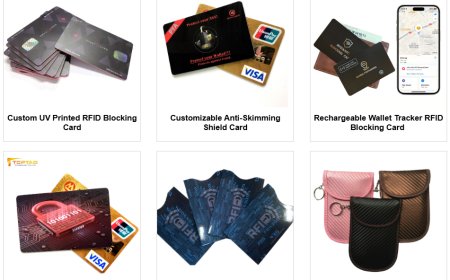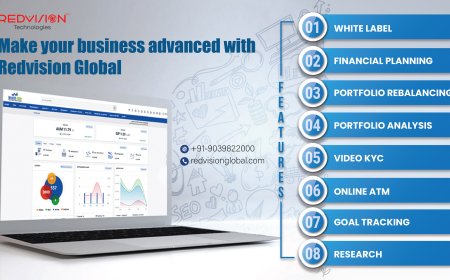Cybersecurity Threats in 2025: How to Protect Your Business
how can you ensure your business stays safe? Let’s dive into the key cybersecurity threats in 2025 and explore actionable steps to protect your company.
In today's increasingly digital world, cybersecurity has become one of the most crucial concerns for businesses of all sizes. With new threats emerging every day, its essential to stay ahead of potential risks to protect your business from devastating attacks. As we enter 2025, the landscape of cybersecurity is changing, and it's vital for companies to be aware of these shifts and take proactive measures.
As a business owner, its natural to want to focus on growth, customer satisfaction, and expanding your reach. But without adequate protection against cyber threats, all that progress could be jeopardized.
What Are the Cybersecurity Threats in 2025?
Cybersecurity threats are not static; they evolve and adapt as technology advances. In 2025, businesses face a variety of new and persistent threats, each with the potential to cause significant damage if not addressed properly. Heres a look at some of the most pressing threats:
1. Ransomware Attacks
Ransomware remains a major threat in 2025. Attackers continue to refine their tactics, often targeting businesses with high-value data or critical infrastructure. Once the ransomware infiltrates your system, it encrypts your data, making it inaccessible until you pay a ransom.
2. Phishing and Social Engineering
Phishing attacks are becoming more sophisticated. Attackers disguise themselves as legitimate organizations or people to trick employees into revealing sensitive information, such as login credentials or financial details. As social engineering tactics evolve, even the most cautious employees may fall victim.
3. Cloud Security Risks
With the continued adoption of cloud services, many businesses are exposed to cloud-based vulnerabilities. If your business relies heavily on cloud storage or computing, its important to ensure that these services are secure and your data is protected.
4. Supply Chain Attacks
Hackers have turned their focus to the entire supply chain. This means that a cyberattack could originate from a third-party vendor you trust. Whether it's a software provider or a hardware supplier, any weak link in your supply chain could expose your business to risks.
How to Protect Your Business in 2025
Now that we understand the threats, the next step is to develop a strategy for mitigating those risks. The key to effective cybersecurity is preparation. Here's how you can start:
1. Invest in Comprehensive Cybersecurity Solutions
To stay ahead of the evolving threats, investing in comprehensive cybersecurity software is essential. This includes firewalls, antivirus software, encryption tools, and intrusion detection systems. Make sure your solutions are up-to-date and cover all aspects of your network.
-
Endpoint Protection: Ensure that all devices connected to your network are secure. This includes not just your computers and servers, but also smartphones, tablets, and even IoT devices.
-
Regular Security Audits: Conduct regular cybersecurity audits to identify vulnerabilities in your systems. This will help you spot potential gaps before hackers can exploit them.
2. Educate Your Employees
The best cybersecurity tools in the world wont help if your employees arent trained to recognize threats. Phishing emails, for example, often rely on human error. Provide regular training sessions on identifying suspicious activity, handling sensitive information, and using strong passwords.
-
Password Policies: Ensure your team uses strong, unique passwords for all systems and applications. Implement multi-factor authentication (MFA) to add an extra layer of protection.
-
Security Awareness: Create a culture of security awareness within your company. Encourage employees to report any suspicious emails or activities immediately.
3. Backup Your Data Regularly
In the event of a ransomware attack or data breach, having a secure backup can make all the difference. Regularly back up your business-critical data to both local storage and cloud storage.
-
Test Restores: Its not enough to just back up datayou need to test the restore process regularly to ensure that your backups are functional.
-
Offsite Storage: Store backups in multiple locations, including physical storage and cloud-based solutions, to reduce the risk of data loss from physical damage or cyberattacks.
4. Implement a Zero-Trust Security Model
The zero-trust model assumes that no user, device, or system is automatically trusted, even if theyre inside your corporate network. Every access request is verified, and only the minimum necessary privileges are granted.
-
Role-Based Access Control: Limit employee access based on their role within the organization. This reduces the impact of a potential breach.
-
Continuous Monitoring: Regularly monitor access to sensitive data and systems to detect any unusual behavior.
Cybersecurity and Other Industries: The Bigger Picture
While cybersecurity is essential in every industry, there are sectors where security is even more critical. Industries like eCommerce, banking, healthcare, and even vaping-related businesses are prime targets for cybercriminals. As the world becomes increasingly digital, businesses in these sectors need to be vigilant.
For example, the vape shop you purchase from could be at risk of a data breach, exposing your personal information. Businesses in this sector must adopt robust security measures to protect their customers and themselves from digital threats.
Additionally, popular vape brands may need to rethink their cybersecurity strategies, especially as they expand their online presence and handle sensitive customer data. The risks associated with an online transaction or eCommerce platform are real, so these companies must stay ahead of the curve to avoid cyberattacks.
Steps for Creating a Cybersecurity Plan for Your Business
Building an effective cybersecurity plan for your business is about more than just installing software. It involves creating a comprehensive approach to protect your business in multiple layers.
1. Assess Your Risks
Start by identifying the specific cybersecurity risks your business faces. This will depend on the type of business you run, the size of your company, and the kind of data you handle.
2. Develop a Security Policy
Create a clear cybersecurity policy that outlines how employees should handle data, access systems, and report security issues. Make sure that everyone in your organization is aware of this policy and understands their role in protecting the business.
3. Prepare for a Breach
No system is foolproof, so its essential to have a plan in place for how to respond in the event of a data breach. This should include notifying affected customers, working with forensic teams to understand how the breach occurred, and taking steps to prevent it from happening again.
-
Incident Response Plan: Develop a plan for responding to cyber incidents, including identifying the threat, containing the damage, and communicating with stakeholders.
-
Legal Considerations: Be aware of any legal requirements regarding data breaches, such as GDPR or CCPA, and ensure your business is compliant.
Conclusion
Cybersecurity threats in 2025 are more complex and widespread than ever before. As a business owner, protecting your company from these threats requires constant vigilance, the right tools, and an educated team. By investing in robust cybersecurity solutions, educating your employees, and implementing solid data backup and protection practices, you can reduce your risk and ensure your business remains safe in an increasingly digital world.
If youre running a business in industries like vaping or any other sector, remember that security is an ongoing process. Whether youre concerned about the latest threat or simply looking to improve your current defenses, the key is to stay proactive. Your businesss cybersecurity will always be evolving, and staying ahead of the curve will help keep it secure.




































